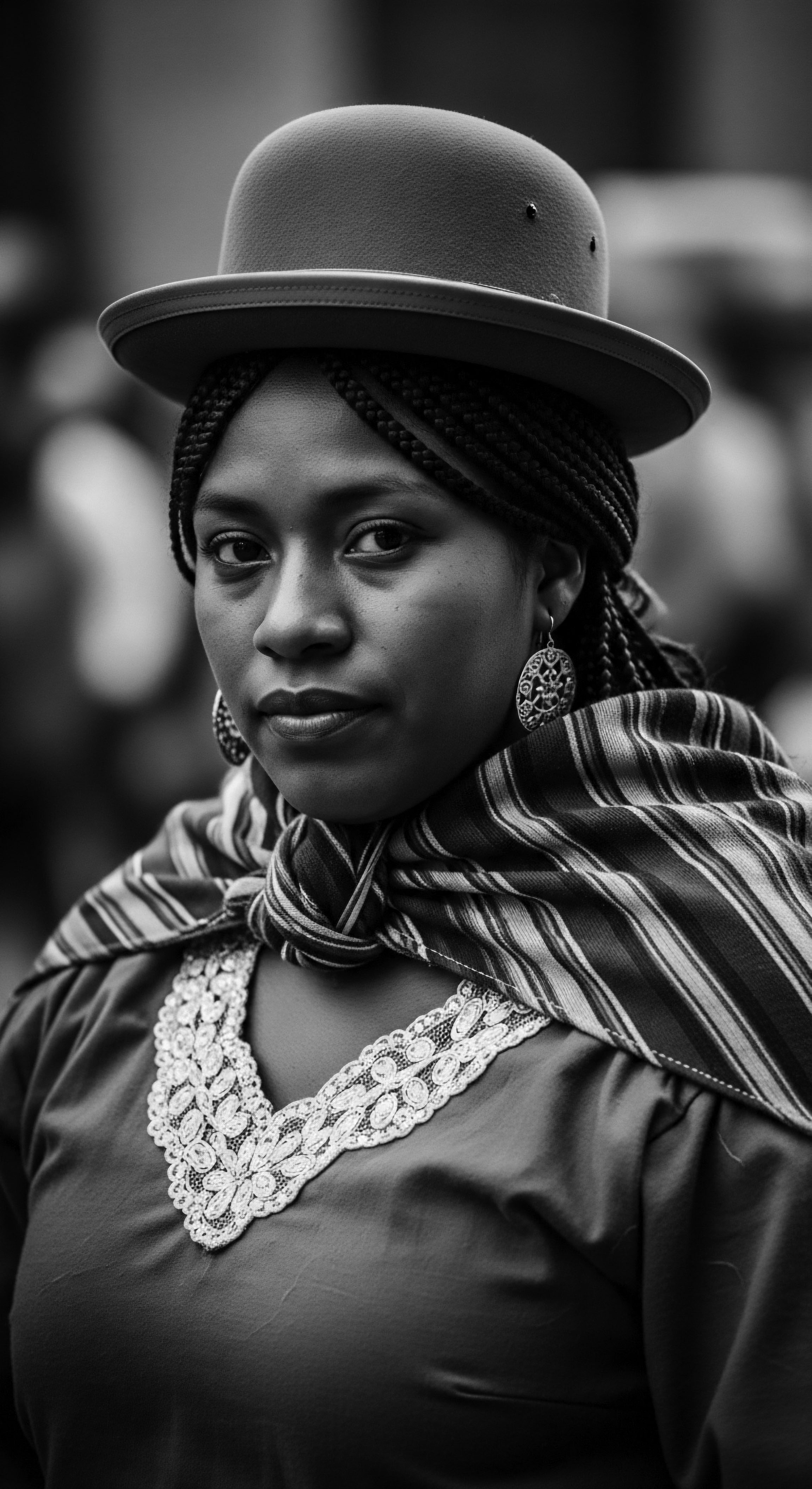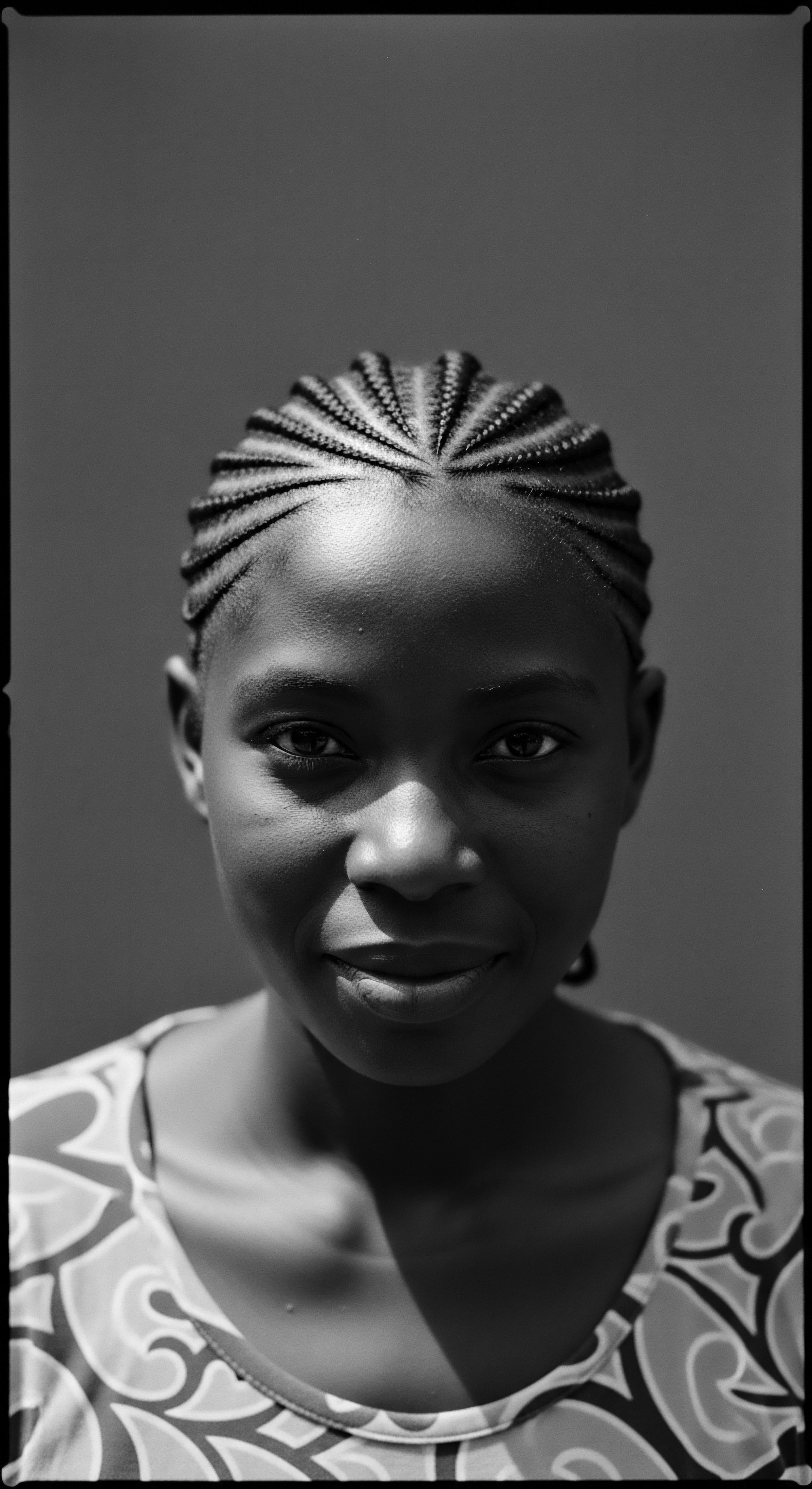
Fundamentals
The botanical entity known as Ulmus Rubra, often recognized by its common designation, Slippery Elm, stands as a testament to the profound wisdom embedded within the natural world. This deciduous tree, native to the eastern and central regions of North America, offers more than mere timber or shade; its inner bark holds a rich history of sustenance and solace. At its fundamental level, Ulmus Rubra is a botanical specimen distinguished by its unique mucilaginous properties.
When the inner bark of this resilient tree encounters water, it yields a thick, gel-like substance. This transformation forms the very basis of its enduring utility across generations and cultures, particularly within the realm of care and well-being.
This natural gelatinous yield, the defining characteristic of Ulmus Rubra, has long been revered for its soothing and protective qualities. The inner bark’s capacity to create this viscous solution is not merely a scientific curiosity; it represents a deeply practical gift from the earth, one that Indigenous communities understood and applied with remarkable ingenuity for centuries. Their intimate connection to the land and its offerings allowed for the recognition of this plant’s inherent value, laying the groundwork for its inclusion in a vast array of traditional practices.

Ancestral Acknowledgments of Ulmus Rubra
Before any formalized scientific inquiry, the Indigenous peoples of North America possessed a comprehensive comprehension of Ulmus Rubra’s benefits. Their understanding was cultivated through direct observation, generational transmission, and a symbiotic relationship with their environment. The tree’s inner bark was not only employed for its medicinal attributes but also served as a reliable source of nourishment during periods of scarcity. This dual function underscores the holistic perspective that defined ancestral ways of life, where the distinctions between food, medicine, and care were often beautifully interwoven.
Ulmus Rubra’s inner bark, when hydrated, yields a soothing mucilage, a property recognized and utilized by Indigenous communities for centuries.
For Indigenous communities, Ulmus Rubra held a place of honor within their materia medica. Its application extended to alleviating discomforts of the throat and digestive system, healing wounds, and addressing various skin irritations. The knowledge of how to properly harvest and prepare the bark, ensuring both its potency and the tree’s continued vitality, was a sacred trust passed down through oral traditions and communal practice. This careful stewardship speaks to a profound respect for the natural world, a respect that informed every interaction with plant life.
The term “slippery Elm” itself, a common descriptor for Ulmus Rubra, directly references this remarkable property of its inner bark. It is a name that conveys immediate understanding of its tactile quality and its function as a lubricating, coating agent. This directness in naming reflects a pragmatic wisdom, a clarity of purpose that is a hallmark of traditional knowledge systems. It is through such simple yet potent descriptions that the foundational understanding of this botanical ally was preserved and shared across countless generations.

Intermediate
Moving beyond the foundational appreciation, the intermediate understanding of Ulmus Rubra deepens into its specific mechanisms and its historical applications within the intricate traditions of hair care, particularly for textured strands. The mucilage, the inner bark’s primary active constituent, comprises complex polysaccharides that absorb water, creating a slick, gel-like consistency. This natural polymer is responsible for the remarkable conditioning, detangling, and soothing properties that have made Ulmus Rubra a revered ingredient in ancestral hair rituals. Its very nature allows for a gentle yet effective interaction with the hair shaft, providing a protective coating that mitigates friction and promotes ease of manipulation.

The Tender Thread ❉ Ulmus Rubra in Hair Heritage
The journey of Ulmus Rubra into the practices of textured hair care is a narrative rich with adaptation and ingenuity. While its initial widespread use was documented among various Indigenous American tribes for medicinal and nutritional purposes, its inherent emollient and demulcent qualities made it a natural candidate for hair and scalp well-being. The knowledge of its capacity to soften, moisturize, and detangle was not confined to a single group; it became a shared wisdom, adapted and applied across diverse communities. For those with coils, curls, and waves, the pursuit of agents that offer ‘slip’ and hydration has always been a central tenet of care, and Ulmus Rubra provides this with an elemental purity.
Consider the historical imperative for effective detangling agents within textured hair communities. The unique structure of coiled and curly hair, with its propensity for tangling and knotting, has always necessitated gentle yet powerful solutions for management. The mucilage of Ulmus Rubra offers a tangible answer to this enduring need.
It coats each strand, reducing inter-fiber friction and allowing for smoother passage of fingers or combs, thereby minimizing breakage. This attribute alone speaks to its profound significance in the daily rituals of hair care, transforming what could be a laborious process into one of gentle nourishment.
- Moisturizing ❉ The mucilage in Ulmus Rubra acts as a humectant, drawing moisture from the environment and sealing it within the hair shaft, providing sustained hydration.
- Detangling ❉ Its slick consistency creates ‘slip,’ allowing hair strands to glide past one another, significantly easing the detangling process for highly textured hair.
- Scalp Soothing ❉ The anti-inflammatory properties of the bark contribute to calming irritated or itchy scalps, fostering a healthier environment for hair growth.
- Strengthening ❉ Components within Ulmus Rubra, including procyanidins, contribute to enhancing the tensile strength and elasticity of hair strands, making them more resilient to breakage.
The application of Ulmus Rubra in hair care was often through decoctions or infusions, where the inner bark was steeped in water to extract its beneficial compounds. These preparations would then be applied as rinses, conditioners, or pre-shampoo treatments. The sensory experience of using this natural agent—the smooth, silken feel of the gel, the subtle earthy aroma—connected individuals to the botanical source and to the lineage of care that had been practiced for centuries. It was a tangible link to ancestral wisdom, a quiet affirmation of the earth’s provisions.
| Aspect of Care Detangling |
| Traditional Application (Ancestral Practices) Infusions and decoctions used as a rinse to ease the separation of coiled hair. |
| Contemporary Relevance (Modern Hair Care) Ingredient in natural conditioners, leave-ins, and detangling sprays for textured hair. |
| Aspect of Care Moisture Retention |
| Traditional Application (Ancestral Practices) Applied as a soothing poultice or rinse to hydrate dry strands and scalps. |
| Contemporary Relevance (Modern Hair Care) Included in deep conditioners and moisturizing creams to seal in hydration. |
| Aspect of Care Scalp Health |
| Traditional Application (Ancestral Practices) Used to calm irritation and inflammation, promoting a balanced scalp environment. |
| Contemporary Relevance (Modern Hair Care) Formulations for soothing scalp treatments, addressing dryness or sensitivity. |
| Aspect of Care Hair Strength |
| Traditional Application (Ancestral Practices) Believed to fortify hair, reducing fragility and promoting overall resilience. |
| Contemporary Relevance (Modern Hair Care) Present in protein-free strengthening treatments and elasticity-enhancing products. |
| Aspect of Care The enduring utility of Ulmus Rubra reflects a continuous understanding of its benefits for hair, from ancient traditions to present-day formulations. |
The intermediate comprehension of Ulmus Rubra extends to understanding its role in the continuum of natural hair care. It represents a bridge between ancient botanical wisdom and the modern quest for wholesome, effective solutions for textured hair. Its inherent properties align seamlessly with the needs of diverse hair types, offering a gentle yet powerful alternative to synthetic ingredients. This enduring presence in hair care traditions underscores its timeless significance, a quiet affirmation of its efficacy passed down through generations.

Academic
The academic definition of Ulmus Rubra, within the discerning lens of Roothea’s ‘living library,’ transcends a mere botanical classification; it represents a profound intersection of ethnobotany, biopolymer science, and the enduring resilience of human cultural practices, particularly as they pertain to textured hair heritage. Ulmus Rubra, or Slippery Elm, scientifically denotes a deciduous tree of the Ulmaceae family, distinguished by its inner bark’s remarkable capacity to produce a mucilaginous colloid upon hydration. This mucilage, a complex polysaccharide composed primarily of galacturonic acid, galactose, glucose, and xylose, along with trace amounts of other sugars and proteins, confers the demulcent, emollient, and lubricant properties that have been meticulously observed and applied across centuries. The significance of this botanical entity lies not only in its biochemical composition but, more compellingly, in its historical and socio-cultural trajectory, particularly within the context of Black and mixed-race hair experiences in the diaspora.
The scientific validation of Ulmus Rubra’s traditional applications rests upon the biophysical characteristics of its mucilage. When applied to hair, this hydrophilic polymer forms a thin, protective film that coats the cuticle, reducing the coefficient of friction between individual strands. This mechanical action is particularly advantageous for coiled and curly hair patterns, where the inherent twists and turns can lead to significant tangling and breakage during manipulation. The presence of oligomeric procyanidins, as documented in certain analyses of Ulmus Rubra bark, also contributes to its potential to enhance the tensile strength and elasticity of hair fibers, offering a biochemical underpinning to ancestral claims of hair fortification.

Echoes from the Source ❉ Ulmus Rubra in Diasporic Hair Traditions
The profound historical journey of Ulmus Rubra within textured hair heritage is perhaps most poignantly illuminated through its adaptation and integration into the healing and care practices of enslaved African peoples in the Americas. While many traditional African botanicals and hair care methodologies were forcibly suppressed or rendered inaccessible during the transatlantic slave trade, the ingenuity and adaptive spirit of these communities led to the assimilation of indigenous North American plants into their wellness repertoires. Ulmus Rubra, readily available in the new environment, became a critical substitute and innovation, providing essential care for hair and scalp under profoundly challenging circumstances.
A powerful, yet often underexplored, historical example comes from the testimony of Sarah Gudger, an enslaved individual interviewed as part of the Federal Writer’s Project in 1937. She recounted the profound reliance on local flora for medicinal purposes, stating, “Dey wah ve’y few doctahs den. Ony three in de whole section. When dey wanted med’cine dey went t’ de woods an’ gathahed hoahhound, slipperelm foah poltices an’ all kinds ba’k foah teas.
All dis yarbs bring yo’ round.” This direct historical account provides compelling evidence of Ulmus Rubra’s integration into the survival and self-care practices of enslaved African Americans. Its application for “poltices” suggests a broader use for soothing and healing external ailments, which would undoubtedly extend to scalp conditions, irritations, and the general maintenance of hair health in an era where specialized products were nonexistent and basic hygiene was often denied. The resilience embodied in this act of foraging and adapting local botanical knowledge for self-preservation speaks volumes about the enduring connection between heritage, healing, and hair within these communities.
The adoption of Ulmus Rubra by enslaved African communities is a testament to the dynamic nature of ethnobotanical knowledge transfer and adaptation. It represents a cultural synthesis, where ancestral African understanding of plant properties met the available flora of a new continent. This was not a passive acceptance; rather, it was an active process of experimentation, discernment, and integration, driven by the imperative of survival and the deep-seated desire to maintain physical and spiritual well-being, including the care of hair, which remained a potent symbol of identity and resistance.

The Unbound Helix ❉ Ulmus Rubra and the Future of Hair Identity
Beyond its historical utility, Ulmus Rubra’s continued presence in contemporary natural hair care circles signifies a conscious reclamation of ancestral practices and a renewed appreciation for botanical efficacy. Modern formulations often isolate the mucilage or incorporate the powdered bark into conditioners, detanglers, and styling gels, mirroring the traditional applications but with refined extraction and delivery methods. This continuity underscores the timeless relevance of plant-based solutions for textured hair, validating the empirical observations of generations past with contemporary scientific understanding. The dialogue between historical application and modern biochemical analysis deepens our collective understanding of its mechanisms, reinforcing the value of traditional ecological knowledge.
The inclusion of Ulmus Rubra in Roothea’s ‘living library’ serves as an elucidation of its multifaceted significance. It is a declaration of its historical importance, a clarification of its scientific attributes, and an interpretation of its ongoing cultural relevance. The plant stands as a symbol of continuity, bridging the wisdom of Indigenous stewardship, the resilience of diasporic adaptation, and the contemporary pursuit of holistic well-being for textured hair. Its designation as a significant entry acknowledges its enduring purport in the lexicon of natural hair care, reminding us that the answers to many of our modern needs often reside within the ancient knowledge systems of our ancestors.
The narrative surrounding Ulmus Rubra within the context of textured hair care extends beyond mere botanical benefits; it encompasses the broader socio-cultural implications of hair as a marker of identity, resistance, and continuity. The conscious choice to utilize ingredients like Ulmus Rubra represents a deliberate alignment with a heritage of self-sufficiency and an honoring of the practices that sustained communities through adversity. This decision resonates with a deeper sense of belonging and cultural affirmation, connecting individuals to a lineage of care that predates commercial beauty industries.
The continued study of Ulmus Rubra, through the combined lenses of ethnobotany, phytochemistry, and hair science, offers fertile ground for further discoveries. For instance, while its demulcent properties are well-established, ongoing research into the precise interactions of its mucilage with keratin structures, or its potential to influence scalp microbiome health, could unlock additional layers of understanding. The exploration of its synergy with other botanicals, as was common in traditional remedies, also presents avenues for innovative product development that remain rooted in ancestral wisdom. This interdisciplinary approach allows for a comprehensive delineation of Ulmus Rubra’s capabilities, ensuring its rightful place as a valued component of holistic hair care for generations to come.

Reflection on the Heritage of Ulmus Rubra
As we contemplate the enduring legacy of Ulmus Rubra, its journey from ancient forests to the heart of our hair care rituals unfolds as a profound meditation on textured hair, its heritage, and its care. This botanical ally, often quietly observed, embodies the spirit of adaptability and resilience that defines the very strands we seek to honor. Its history is not confined to scientific texts or botanical classifications; it is etched into the collective memory of communities who found solace and sustenance in its yielding bark. The gentle, yet potent, properties of its mucilage reflect a wisdom that transcends time, a testament to the earth’s unwavering provision for our well-being.
Ulmus Rubra stands as a living testament to the enduring power of ancestral knowledge and the unbroken lineage of care for textured hair.
The story of Ulmus Rubra in the context of textured hair heritage is a reminder that beauty practices are rarely superficial. Instead, they are deeply intertwined with survival, identity, and cultural continuity. For Black and mixed-race communities, particularly those in the diaspora, the ability to maintain hair health was an act of quiet defiance, a way to preserve selfhood amidst systems designed to diminish it.
Ulmus Rubra, a plant of the land they found themselves upon, became a silent partner in this enduring struggle, offering its soothing embrace to troubled scalps and tangled coils. Its integration into these practices speaks to an inherent human capacity to adapt, innovate, and carry forward traditions even when faced with immense disruption.
Through the lens of Roothea’s ‘living library,’ Ulmus Rubra emerges as more than an ingredient; it is a narrative, a whisper from the past, a guide for the present, and a beacon for the future. It calls us to remember the ingenuity of those who came before, who saw not just a tree, but a source of healing, nourishment, and care for their crowning glory. Its story encourages us to seek understanding not only in laboratories but also in the rich archives of ancestral wisdom, recognizing that true knowledge often resides in the harmonious blend of scientific inquiry and lived experience. The continuing relevance of Ulmus Rubra invites us to approach our hair care with reverence, seeing each application as a connection to a profound lineage of care, a tender thread woven through generations.

References
- Moerman, D. E. (1998). Native American Ethnobotany. Timber Press.
- Culpeper, N. (1653). The English Physitian Enlarged, with 369 Medicines made of English Herbs not in any Impression until this.
- Rountree, C. & Davidson, T. (1997). A Guide to Traditional Medicinal Plants of the Powhatan Indians. Jamestown-Yorktown Foundation.
- Rambwawasvika, H. & Parekh, C. (2017). Extraction and Characterisation of Mucilage from the herb Dicerocaryum senecioides and its use as a potential hair permanent. Research India Publications.
- Carney, J. A. (2001). African Traditional Plant Knowledge in the Circum-Caribbean Region. Journal of Ethnobiology, 21(2), 167-187.
- Gudger, S. (1937). Interview by Marjorie Jones. In Slave Narratives ❉ A Folk History of Slavery in the United States From Interviews with Former Slaves, North Carolina Narratives, Vol. XI. Federal Writer’s Project.
- Voeks, R. A. (2007). The Ethnobotany of African American Women in the Southern United States. Journal of Ethnopharmacology, 112(3), 437-446.
- Mills, S. Y. (2004). The Dictionary of Modern Herbalism ❉ A Practical Guide to Contemporary Herbal Medicine. Inner Traditions/Bear & Co.
- Barnes, J. Anderson, L. A. & Phillipson, J. D. (2007). Herbal Medicines (3rd ed.). Pharmaceutical Press.
- Tyler, V. E. Brady, L. R. & Robbers, J. E. (1900). Pharmacognosy (9th ed.). Lea & Febiger.
